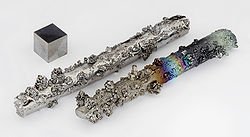
The economic goldmine hidden deep in the Earth’s crust | TVO.org
So it’s not like we’re, say, 15 years away from running out of key metals?
No. But we could be 25 to 30 years away from having shortages. If we see a major resurgence in the economies of Asia, that demand is going to increase dramatically. That’s what people are worried about: do we have enough resources to meet that growing demand?
How will your research help in finding new mineral deposits?
The exact processes that are responsible for metal deposits through time are not really understood. By understanding these processes, what we want to do is be able to predict what areas are more favourable for mineral resources. There are vast areas of the Canadian Shield, for example, that are geologically similar but have vastly different metal endowments.
How might Metal Earth help the northwestern Ontario Ring of Fire project?
We want to do some research to better understand why it’s there. If you look at the Ring of Fire, the original discovery was made by people looking for diamonds. Then they found a base metal deposit — a copper-zinc deposit — and then the nickel and then the chromite. What Metal Earth aims to do is lessen the serendipity of exploration. We were fortunate to find the Ring of Fire.
So it would offer more certainty in terms of where to look and what you would be looking for.
Absolutely. What makes Metal Earth so different than previous research is [for one thing] scale: the integration of all geoscience data — geophysics, geochemistry, geology. We’re going to produce crust-to-mantle-scale MRIs down 40 to 50 kilometres and we’re going to tie that to geochemistry and geology.
How do you do an MRI that goes down 50 kilometres?
Think of it as a seismic survey where you bounce soundwaves through the crust [of the Earth]. It’s like an ultrasound, if you like, where [you] can image a baby — except we’re imaging structures and features in the crust. Then [we] measure conductivity differences down that same distance that can indicate different rock types; we use gravity to look at the different densities and model that through the crust. Then we integrate that with the detailed surface geology, geochemistry and isotopic work to produce a virtual image of that slice [of the Earth’s crust]. This has never really been attempted at this scale before.
This interview has been edited for length and clarity.